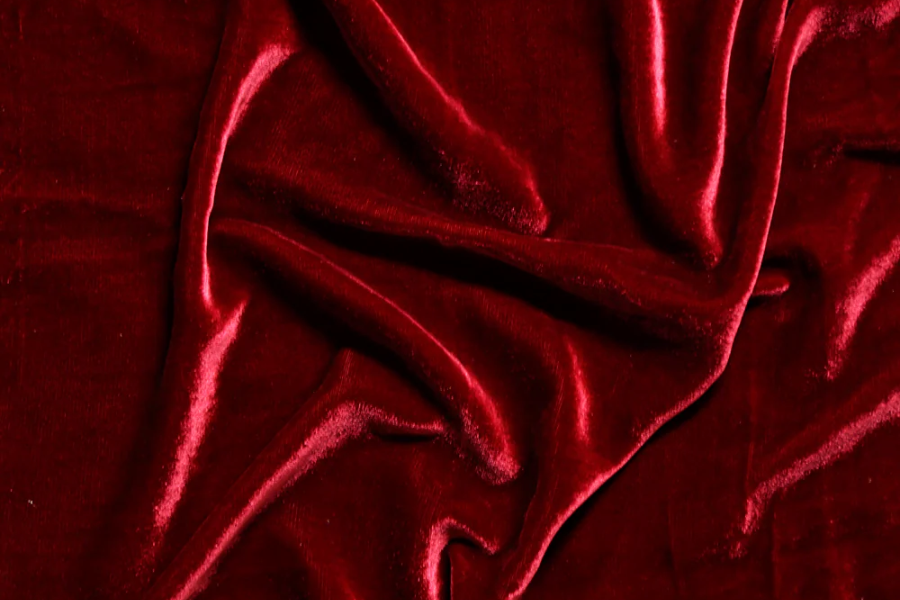Velvet for Beginners: Understanding Different Types of Velvet and Their Uses
Introduction to Velvet
Velvet, a fabric that conjures images of luxury and extravagance, has enchanted textile aficionados for centuries. Known for its richly textured surface and soft sheen, velvet was historically made from silk. In modern times, it has evolved to include blends with synthetic fibers like polyester, making it more accessible without sacrificing its signature opulence. The intricate process of weaving velvet involves erecting short, dense piles that give the fabric its plush feel and reflective surface. This timeless textile has an allure that transcends fashion epochs and interior design trends.
Today, artists and craft enthusiasts can explore this fabric in greater depth thanks to the availability of velvet fabric by the yard, which opens doors to innovative uses across different projects. Whether you’re venturing into fashion design or adding a touch of sophistication to your home décor, velvet offers an unparalleled blend of aesthetic appeal and tactile delight. Understanding the nuances of various velvet types equips professionals and enthusiasts with the knowledge to integrate this classic fabric into their creative endeavors effectively.
Types of Velvet
Velvet’s diversity in type and texture allows it to cater to various uses, each providing a unique look and feel. Crushed velvet, recognized by its spotted texture and high shine, emerges from a process that twists the fabric while damp, resulting in a three-dimensional, shifting surface. This type is often employed in fashion and decorative textiles where a dynamic visual impact is desired.
Silk Velvet
Silk velvet remains the epitome of luxury, cherished for its superior softness and luster. It offers unparalleled drape and elegance, making it a preferred fabric for evening wear and upscale home furnishings. However, its delicate nature requires careful handling and appropriate maintenance to ensure longevity and sustained beauty.
Cotton Velvet
Cotton velvet provides durability with a matte finish, making it ideal for home décor applications like upholstery. It is less shiny than its silk counterpart, offering a more subdued aesthetic while retaining a cozy texture. Cotton velvet’s robust nature enables it to withstand regular wear, making it a practical yet attractive choice for everyday furnishings.
Understanding each type enables users to make informed decisions based on their needs and the attributes best suited to their personal or design projects.
Uses of Velvet in Fashion
Within the fashion industry, velvet has maintained its stature as a symbol of sophistication and allure. With its ability to transcend seasonal trends, velvet is a fabric that offers designers a canvas for innovation while retaining its roots in classic elegance. From structured blazers that define the waist with a touch of formality to luxurious flowing gowns that epitomize grace and movement, velvet is a fundamental element in high fashion and ready-to-wear collections.
The versatility of velvet in fashion extends to accessories, adding a touch of elegance and flair to items like shoes, handbags, and even jewelry. The depth and texture of velvet can elevate any piece, turning everyday items into statement pieces that draw attention and admiration. Designers and fashionistas celebrate its adaptability, utilizing velvet to break monochrome outfits’ monotony or enrich layered ensembles’ complexity. As highlighted in influential fashion publications, velvet remains a steadfast favorite for those seeking to make a lasting impression no matter the occasion.
Uses of Velvet in Home Décor
Velvet’s role in home décor is to enhance elegance and comfort in living spaces. Its soft feel and plush appearance make it a sought-after material for furniture and design elements that aim to inject an aura of luxury and warmth. Velvet upholstery for sofas and chairs provides an inviting touch that beckons relaxation and conversation while also serving as stunning focal points within a room.
In curtains, velvet’s heavy drape creates a sense of drama and grandeur. The fabric’s ability to absorb and diffuse light softly enriches a room’s ambiance, making it an excellent choice for spaces intended for comfort and sophistication. Even in small doses, such as velvet throw pillows or bedspreads, this fabric’s opulence exudes, making it a practical and impactful addition to any home. Design experts frequently recommend velvet for its ability to bridge the gap between modern minimalism and classic luxury, ensuring it remains a timeless option for decorators looking to add texture and richness to their interiors.
Choosing the Right Velvet
The appropriate velvet type is essential for achieving the desired outcome in your fashion or design projects. The choice depends significantly on the end-use and personal aesthetic preferences. For instance, stretch velvets imbued with spandex are optimal for fashion, offering the comfort and flexibility needed for body-hugging apparel. On the other hand, for home décor, factors like durability, color fastness, and ease of maintenance play a more significant role in influencing choice.
When deliberating over velvet types, consider the location and frequency of use. Highly trafficked areas or regularly worn garments may benefit from robust cotton velvets, while silk velvet would serve best in decorative applications or occasional wear to preserve its delicate quality. Ultimately, understanding each velvet type’s characteristics and care requirements humanely guides you towards a choice that aligns with functional and aesthetic considerations, ensuring satisfaction and longevity of use.
Caring for Velvet
Proper maintenance of velvet is crucial to preserving its luxurious appearance and comfort. While velvet can require more care than other fabrics, following a few essential guidelines can significantly extend its lifespan. Regular gentle vacuuming or brushing helps keep the pile neat and free from dust, and any spills should be attended to immediately with a dry or slightly damp cloth—dab rather than rub to prevent pile damage.
Each type of velvet has its care requirements. Silk velvet often necessitates professional dry cleaning to maintain its sheen and texture, while cotton velvet can occasionally withstand careful handwashing or gentle machine washing, depending on the manufacture’s instructions. Avoid prolonged exposure to direct sunlight to prevent fading. By adopting these care routines, velvet can continue to furnish your wardrobe or home with elegance and comfort, maintaining its visual and tactile appeal over time.
Conclusion: Embracing Velvet in Everyday Life
Velvet is a quintessential choice for those seeking to infuse their daily lives with a touch of timeless sophistication. Its journey from ancient halls of luxury to contemporary fashion runways and living rooms exemplifies its adaptability and enduring charm. Whatever your inclination—whether sartorial or interior—velvet stands as an elegant ally, capable of transforming the mundane into the extraordinary with its depth, texture, and sheen.
By understanding velvet’s diverse types and applications, enthusiasts and professionals alike can confidently incorporate it into their creative spaces, enriching their environments and wardrobes. Velvet’s continued relevance in design and fashion is a testament to its unparalleled allure, encouraging exploration and appreciation of its refined beauty in tradition and innovation.





